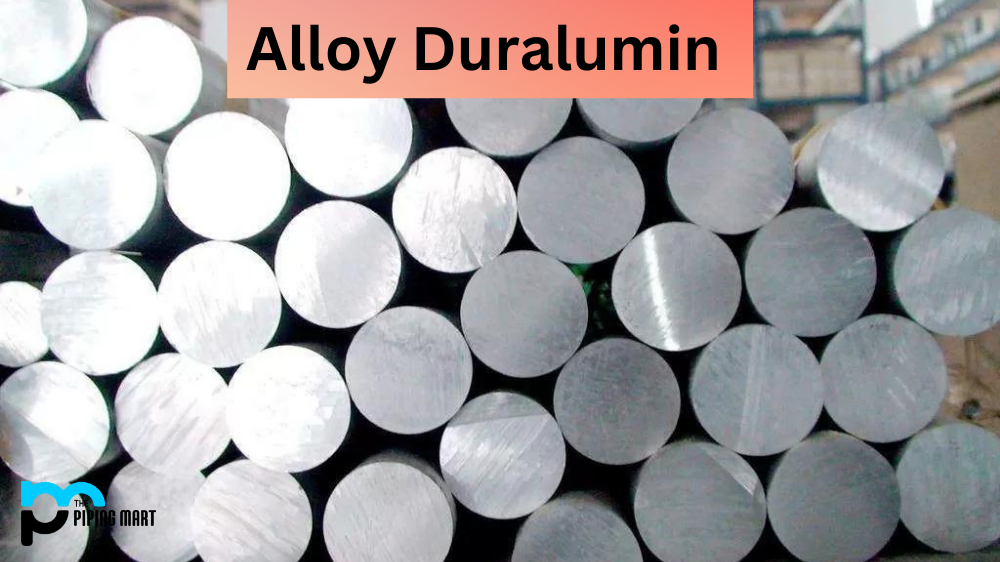Alloy duralumin is an aluminum-based alloy that has been used in the construction of many important structures, from airplanes to bridges. But why aluminum? What makes this particular metal so essential to the construction of strong and durable structures? Let’s explore why alloy duralumin is such a popular choice for architects and engineers.
What is Alloy Duralumin?
Alloy duralumin is an aluminium-based alloy composed primarily of aluminum (94.4%), copper (4%), magnesium (0.5%), and trace amounts of manganese and silicon. The combination of these elements creates a strong and lightweight metal that can be used in the construction of many important structures, from boats and cars to aircraft frames and bridges.
Duralumin alloy properties
Alloy Duralumin is an incredibly strong and lightweight material that has found its way into many applications. As a class of alloy metals, it contains aluminum (95-98% Al), copper (4-5% Cu), and small amounts of magnesium and other elements. The usage of Duralumin is prevalent in aerospace construction due to its lightweight properties and superb strength which increases the aircraft’s fuel efficiency tremendously. It also has superior corrosion resistance and can also be easily formed and welded, making it ideal for modern aircraft designs. In addition to that, Duralumin is cheaper than most other high-strength alloys meaning it offers performance at an affordable cost. Its versatility and durability have ensured its use in structural components across a wide range of industries, from automotive repair to military equipment production. Kudos to the great properties of Alloy Duralumin!
Duralumin alloy uses
Duralumin alloy is a unique blend of aluminum, copper, manganese and magnesium that is used in a variety of industries. From aerospace to automotive applications, Duralumin is commonly used for its strength, malleability and corrosion-resistant properties. It has been praised for its lightweight characteristics which make it an ideal material for aircraft construction; meanwhile, its sturdy nature makes it a perfect choice for automobile parts such as crank shafts and suspension arms on gear box assemblies. While many alloys can lead to products with compromised quality due to their changing composition through time, when cared for properly, the extraordinary attributes of Duralumin maintain their luster even after years of use.
- aircraft.
- automobiles.
- ships.
- buildings.
- bridges.
- machinery.
Benefits of Using Aluminium in Alloy Duralumin
Aluminium is the most abundant metal on earth, making it an excellent choice for use in alloy duralumin. It is lightweight yet extremely durable, which means it can support heavy loads without compromising its own structural integrity. Its corrosion-resistant properties make it ideal for use in harsh environments where other materials may not hold up as well over time. Additionally, aluminum’s malleability allows it to be shaped into complex shapes with ease, making it a great choice for intricate designs that require precision accuracy. Finally, aluminium has excellent thermal conductivity, meaning it can dissipate heat quickly and evenly—a must-have feature when building structures that generate a lot of heat, like engines or turbines.
Conclusion
Alloy duralumin is an incredibly versatile material that offers strength and durability unlike any other metal out there. With its combination of low weight and high strength, corrosion resistance properties, malleability, and excellent thermal conductivity, it’s easy to see why so many engineers rely on this special alloy when constructing their most important projects. Whether you are building a car engine or an airplane frame, alloy duralumin has the features you need to ensure your project’s success!

Abhishek is a seasoned blogger and industry expert, sharing his insights and knowledge on various topics. With his research, Abhishek offers valuable insights and tips for professionals and enthusiasts. Follow him for expert advice on the latest trends and developments in the metal industry.




